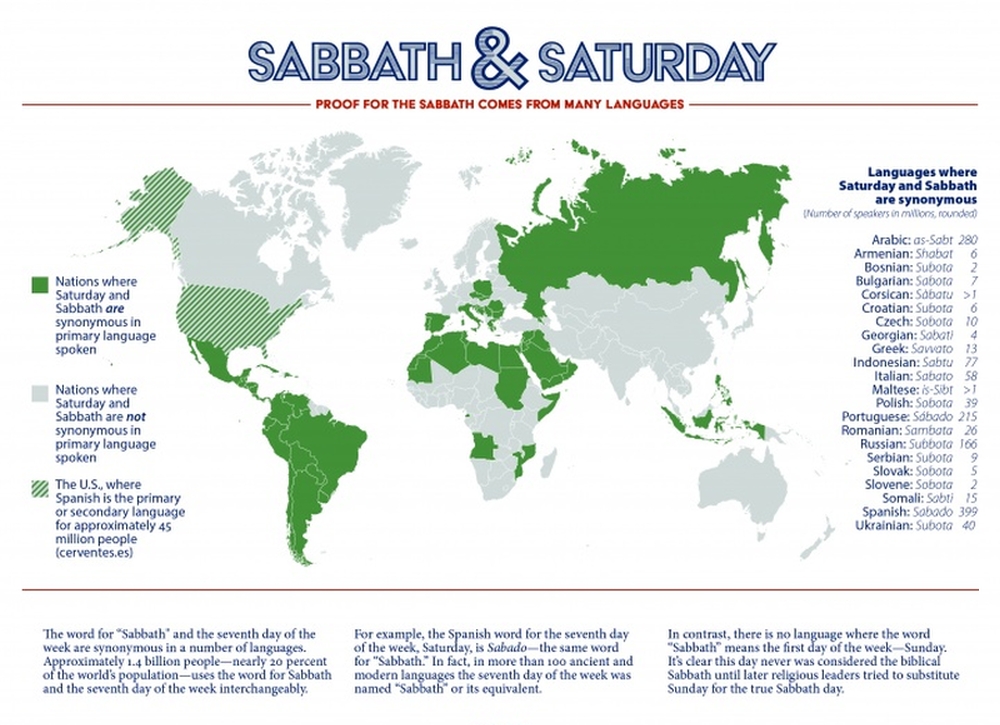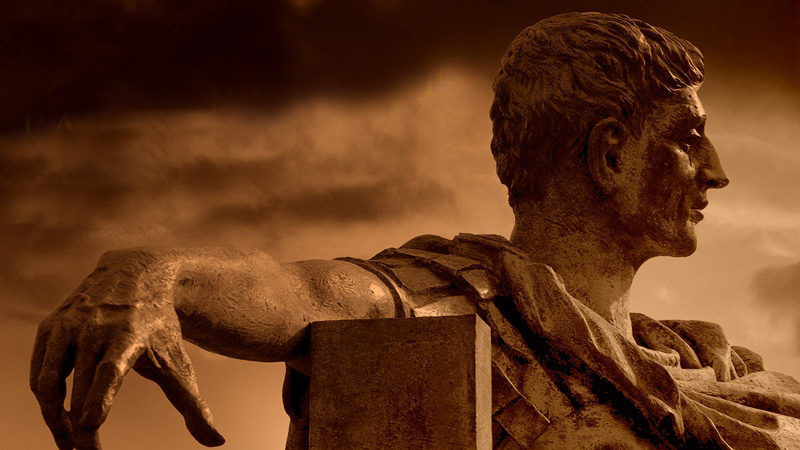The Roman Catholic church of the middle ages was largely an abomination, a hybrid fusion between Christianity and paganism. This is why today, so-called Christian holidays actually have their roots in paganism, such as the Christmas tree and the Easter bunny (both symbols of pagan fertility gods). However, this was not the beginning of how paganism weaseled its way into the Christian church.
In the first nearly 3 centuries of Christianity before Emperor Constantine took control of the Roman Empire, Christians were literally hunted down and killed – slaughtered in droves. Emperor Nero of Rome, arguably one of the most cruel and sinister anti-Christian figures in history, was one of the most famous killers of Christians. He even burnt Christians as human torches in his garden.
The Christian church survived and sustained, but under a great deal of persecution. Many groups would even hide completely underground to escape the tyranny of the anti-Christian zealots. Historical remains of secret underground tunnel systems and living spaces with evidence that those living there could have survived for extended periods underground. These have been linked to Christianity, secret underground spaces where Christians lived to escape tyranny and death.
This all ended with Emperor Constantine. Constantine was believed to be converted to Christianity around 312 AD, when he saw a vision of a cross of light at the Battle of the Milvian. After ordering his troops to add to their shields the Christian symbol that he saw in his vision, they were victorious in battle, a victory which was pivotal in the ascension of Constantine to the throne of Rome.
In 313 AD, a year after Constantine seized control of the Roman Empire, Constantine took the final step in eliminating Christian persecution by passing the Edict of Milan, which made all religions neutral, thereby ending persecution of Christians. Moreover, since Constantine himself claimed to be a Christian, Christianity quickly become popular, and nobles would even pretend to be Christian to gain favor with the Emperor.
It was not long after this that, due to a bitter rivalry between Christians and pagans which threatened the cohesion of the empire, that Constantine decided to fuse pagan ideologies and traditions with Christianity. This ended the rivalry and appeased the majority of the masses, but also introduced evil doctrines into Christianity.
While Constantine is often proclaimed as a Christian and honored for the good he did in establishing Christianity as a legal and acceptable religion, eliminating persecution; still Constantine was deeply ingrained with pagan beliefs from childhood.
Constantine was from an early age indoctrinated into the cult of Sol Invictus, which was the worship of the sun god Helios (also known as Sol). Constantine was indeed a monotheist, but historical evidence points to his god as not the God of Abraham as in Christianity, but rather the Roman sun god Helios. As early as 309 AD, Constantine had coins engraved which depicted him as a sort of deity in reference to the sun god. Inscribed on these coins was the words “Soli Invicto Comiti”, which is translated as “To the Sun, Invincible Companion.”
Recognizing Constantine as a devoted sun-god worshipped, it is therefore not surprising that when he decided to fuse Roman pagan beliefs of Sol Invictus with Christianity, that he also used this opportunity to change the Christian Sabbath (Saturday) to Sunday as the official day of worship. That is, Sunday, is the day in honor of the sun god. Saturday, by contrast, in many languages actually looks, sounds, and means “sabbath day”, even though our “saturday” in English actually can mean worship of the god Saturn.
For example, while the Hebrew word for Sabbath is “Shabbat” or “Shabbos”, it is quite clear the implication when the word for Saturday in Armenian is “Shabat”, Bulgarian and Polish are “Sabota”, Ukranian and Croatian are “Subota”, and so on and so forth. Not every language has a name for saturday which is synonymous with Sabbath, but many do. See this chart:

Of course, this is not merely speculation, as any God-fearing scholar of ancient Hebrew can tell with absolute certainty the truth that Sabbath has and always was from Friday at sundown to Saturday at sundown.
Meanwhile, the pagan Romans of the early centuries celebrated worship of the sun god Helios on Saturday. When Constantine fused Sol Invictus paganism with Christianity, and changed the Christian day of worship also to Sunday, he also made it law, so that any Christian who defied it by celebrating on Saturday would be a breaker of Roman law.
Sabbath was not the only Christian precept to be “changed” – although of course not by the will of God. Among the corruption include Christmas, which is mostly a pagan holiday, and most scholars do not believe it was the actual day of the birth of Christ, which was unknown.
Instead, Christmas was simply a terrible pagan holiday called Saturnalia, full of disgusting rituals, human sacrifices, depraved sexual immorality and orgies, gift-giving, and even the mistletoe was just more sexual immorality originating with Saturnalia.
Historically celebrated from December 17 to 23, Constantine simply slapped on a Christian name, made it December 25, and thus merged Christianity with the depraved holiday of Saturnalia. Before this, there was no precedent in Christianity, since the date of the birth of Christ is not actually known.
Saturnalia is not the only pagan holiday fused into Christmas. The other was the festival of Mithras, the angel of light (most likely literally ancient Luciferianism – the worship of Satan whom the Bible says can appear as an angel of light) which was celebrated by the Romans from December 25 to January 1. This festival commemorated the birth of Mithras. Mithras was also referred to as the sun god – understandable since Constantine was a monotheist who believed in the sun god. Constantine probably merged the two (Sol and Mithras) believing they were really two cultural perspectives on the same sun god. (In fact, they were two cultural perspectives on the same false god – Lucifer).
What is worse that is Mithraism is often seen as the competitor of Christianity, since it is so similar. Gerald Berry in his book, “Religions of the World”, said in his book, “Both Mithras and Christ were described variously as ‘the Way,’ ‘the Truth,’ ‘the Light,’ ‘the Life,’ ‘the Word,’ ‘the Son of God,’ ‘the Good Shepherd’.” This is no wonder, since the religion is derived from Satan, and Satan has historically always pretended to be like God and sought to be God.
So, in fact, Christmas had absolutely no roots in Christianity, but rather in the worship of Lucifer, commonly referred to as Satan, and a couple Roman gods who both symbolize Lucifer. Every tradition from the Christmas tree to gift-giving to even the nativity scene really came from pagan origins, and originated when Constantine tacked on a Christian name to the pagan holidays.
Why did all this happen? It is very possible that Satan, the enemy of God, realized he had been taken. He realized he was losing the war on humanity. Even despite urging Nero in 70 AD to massacre and torture Christians, and outright banning the religion of Christianity, still nearly 250 years later Christianity was not dying out, but growing, despite persecution.
As a result, Satan realized he needed to change his tactics. Oppression and illegality wasn’t working; it was not quashing Christianity, just making more martyrs and saints. So, Satan used Constantine, who was from his early years a devout Luciferian sun god worshiper, to make Christianity quasi-legal and then corrupt it to its very core with Luciferian beliefs from various cultures.
Why do I say quasi-legal? It is quasi-legal because true zealous Christians – those who, say, desired to worship on the true Sabbath, or follow Biblical principles that went against the new Christian-pagan fusion, were actually deemed lawbreakers. While the name of Christianity was no longer a persecuted religion, the true Christians who still followed the Bible and not the new corrupted Christianity, were imprisoned, killed, or banished, and even ostracized from the church.
In a sense, it is one of the most effective subversions of Christianity in all of history. Of course, God reigns supreme, and no amount of subversion, corruption, or distortion can overcome those who are truly devout to God, since the wisdom of God comes from God alone. It can, however, accidentally cause Christians to follow after pagan views and beliefs, and make it much more challenging for a Christian to find truth, when even the original translation of the Bible was in a way affected by paganistic views passed down over the centuries.



